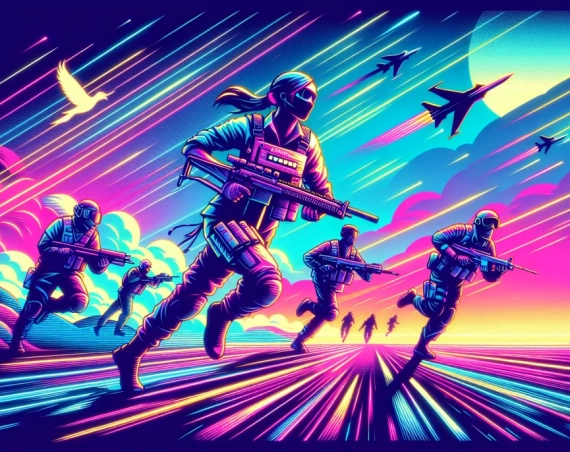
Ghost of Yotei Devs Embrace Minimalism: Steering Away from Mini Maps and Yellow Paint
The development team behind the highly anticipated open-world game Ghost of Yotei has taken a bold approach to player guidance by avoiding traditional user interface elements like mini maps and yellow paint markers. Their aim is to preserve screen clarity and enhance player immersion through more organic, integrated navigation solutions.
Rethinking Player Guidance in Open World Games
Open-world games have conventionally relied on visual aids such as mini maps and vivid highlights—often bright yellow paint—to direct player attention to interactable objects, objectives, or pathways. While effective, these aids can sometimes disrupt the visual harmony of the game environment and risk over-handholding players.
As Ghost of Yotei’s developers explain, their philosophy prioritizes a “clean screen,” devoid of intrusive elements that detract from the game’s aesthetic. Creative Director Jason Connell notes that the art team meticulously crafted a beautiful, nature-inspired world over five years, and overlaying it with flashy markers would undermine that vision.
Innovative Alternatives to Traditional UI Elements
Instead of mini maps and glaring yellow paint, Ghost of Yotei uses in-world, diegetic cues to naturally guide players. These include:
- Fireflies and golden birds: Visually striking creatures that subtly lead players toward key locations or hidden secrets.
- White markers: Discreet indicators on climbable surfaces that blend into the environment.
- Environmental storytelling: Players might follow natural elements, like the direction of the wind, trails left by wildlife, or atmospheric sounds, as subtle navigational aids.
This approach aligns with emerging trends in game design emphasizing immersion and player agency. According to a 2024 study by the Interactive Digital Software Association, 68% of players prefer guidance systems that maintain immersion rather than overt, UI-heavy directions (IDSA, 2024).
The Philosophy Behind a Minimalistic HUD
Connell describes this design challenge as one of the toughest in game development—”figuring out ways to get players excited about exploration without shouting directions from the UI.” By minimizing on-screen clutter, players are encouraged to engage deeply with the game world, heightening curiosity and discovery.
Moreover, removing the mini map and cursor-based markers encourages players to rely more on observational skills and environmental cues. This not only enriches gameplay but promotes a more authentic interaction with the game’s setting, which draws heavily from a romanticized vision of Japan’s natural beauty.
Benefits of a Clean Screen Design
- Enhanced immersion: Players feel more connected to the game world without UI distractions.
- Increased exploration: Natural navigation encourages curiosity and organic discovery.
- Artistic integrity: Preserves the work and vision of artists creating detailed environments.
- Player satisfaction: Avoids the common criticism of ‘hand-holding’ found in many open-world titles.
Case Studies and Industry Trends
This minimalist guidance philosophy is gaining traction. Games like The Legend of Zelda: Breath of the Wild demonstrate how in-world cues such as landmarks, directional sounds, and weather can successfully replace overt map markers, enhancing player engagement. Similarly, Red Dead Redemption 2 uses environmental storytelling and natural landmarks to orient players, contributing to its critical acclaim.
Research published in the Journal of Game Design and Development Education (2025) suggests that games employing minimal HUDs see a 25% increase in reported player immersion compared to games with extensive UI overlays (JGDD, 2025).
Challenges and Design Considerations
While the benefits are clear, designing an intuitive, clean UI without mini maps or traditional markers is challenging. Developers must:
- Carefully craft environmental hints that do not confuse players.
- Balance difficulty so players feel guided but not forced.
- Test extensively to ensure navigation methods are accessible to all player types.
Ghost of Yotei’s approach reflects a growing desire in game development to prioritize immersive storytelling and exploration mechanics over UI convenience. The emphasis on a “clean screen” supports a more cinematic and artistic game experience.
Conclusion: Embracing Immersion through Minimalism
The developers of Ghost of Yotei demonstrate a commitment to immersive game design by eschewing mini maps and bright yellow paint markers in favor of subtle, in-world navigation aids. This choice respects the artistic craft behind the game and enhances the player’s sense of wonder and discovery. As open-world games evolve, such innovations in user interface design may set new standards for how players explore richly crafted virtual worlds.
References:
- Interactive Digital Software Association (2024). “Player Preferences in HUD Design.” IDSA Research Report.
- Journal of Game Design and Development Education (2025). “Impact of Minimalist User Interfaces on Player Immersion.” JGDD, Vol. 12, Issue 1.
- The Legend of Zelda: Breath of the Wild, Nintendo, 2017.
- Red Dead Redemption 2, Rockstar Games, 2018.


